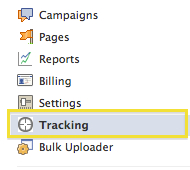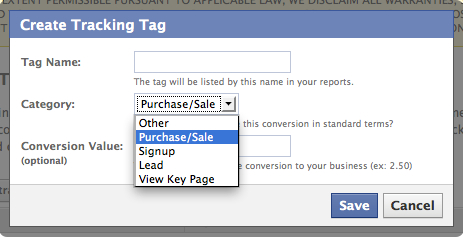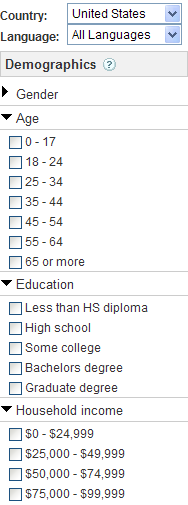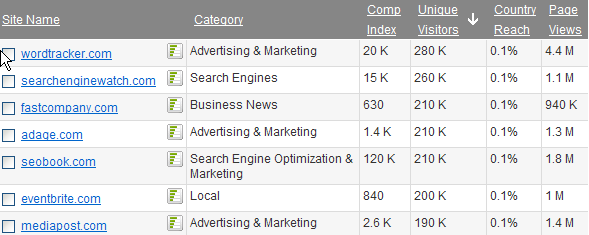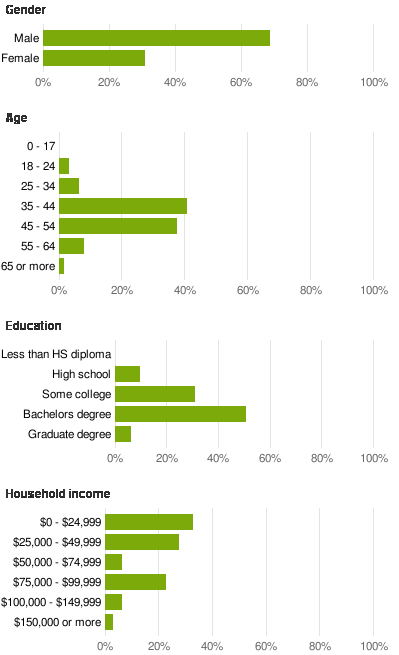Guest post by Tom Demers
At WordStream, we just launched a couple of free tools I think paid search marketers can get a lot of utility out of. I’ll walk through how both of them work and what you might be able to use them for.
The first tool is something we’re calling The Free Keyword Niche Finder. Basically the premise is that rather than offering you single keyword suggestions we’re showing you the pockets of keywords (or “keyword niches”) that are the most popular.
This is valuable for a few reasons:
- Keyword Niches Versus Single Keywords – It helps you prioritize your content, keyword targeting, and campaign/AdGroup creation based on an entire “keyword universe” surrounding your topic. Many times you’ll find the most popular keyword you could target will have the “longest tail,” but not always.
- Suggested Keyword Variations – It shows you popular variations within a given keyword cluster, or niche – this helps you to vary page content and anchor text: something real SEOs advocate – and it helps you to structure comprehensive PPC campaigns or Ad Groups
- Campaign Structure Suggestions – It helps you to create a nice semantically-themed campaign and/or Ad Group structure for paid search account creation
I’ll walk through each of these advantages, and then introduce another tool we’re introducing called The Free Keyword Grouper.
1. “Keyword Niches“ Versus Single Keywords
It’s interesting to compare the results of a traditional keyword tool to The Free Keyword Niche Finder.
Here is the list of results from our Free Keyword Tool:

Now let’s look at the results for the same topic using The Free Keyword Niche Finder:

The interesting thing here is in the difference between the two results, and the way that the two tools function. The Free Keyword Tool looks at the volume of results across a variety of sources (ISPs, search engines, and toolbars). The Free Keyword Niche Finder, meanwhile, takes the same data that The Free Keyword Tool is using (our own database) and then clusters that information semantically.
So what we’re seeing here is that some keywords have a longer or more substantial “tail”. Look:

The aggregated keyword “niches” are more centered around brands. If we dig deeper into the refurbished laptops – ibm cluster we get a pretty good idea of why the tail for brands is longer:

So while “used refurbished laptops” is a more popular single query than “refurbished laptops ibm”, the sum of the refurbished laptops keyword niche is actually greater, and it contains more specific, buy-focused terms.
By looking at the data side-by-side, it definitely appears that IBM refurbished laptops is a more profitable keyword niche to attack.
2. Suggested Keyword Variations Within a Group
The tool also shows you closely related variations, as you can see above, so that you can structure a single landing page and Ad Group/ad text to target a variety of phrases, allowing your campaigns to generate more ROI and to become more scalable.
3. PPC Campaign Structure Suggestions
One of the neatest things about this tool from a PPC standpoint is that if you’re starting a new paid search account or campaign, you can get some great suggestions for either high-level campaign ideas, or even for actionable Ad Groups (depending on the term you put in). Following our example from above, we might turn each of the top ten suggestions into high-level campaigns. From there, we could drill down to find specific Ad Groups for each of our campaigns. Let’s take one of the more popular niches, refurbished laptops – dell, and enter that keyword into the Niche Finder:

Assuming were using Refurbished Dell Laptops as a campaign, these would make for a series of pretty tight Ad Groups, ranging from around 10 keywords to around 35, and allowing us to write a very targeted ad and create a very specific, compelling landing page for each group.
The Free Keyword Grouper – Finding Keyword Niches in Your Own Lists and Data
Our other free tool, The Free Keyword Grouper, offers pretty similar functionality, but instead of asking for a keyword as input, it groups your existing data (whether you generated a list from a keyword suggestion tool like the SEO Book Keyword Suggestion Tool or WordStream’s Free Keyword Tool), or allows you to export data from your analytics or a search query report, drop it into the tool, and then The Free Keyword Grouper segments that data for you:

If you drop in a list of keywords, it’ll spit back a list of results similar to what you would find with The Free Keyword Niche Finder. This is a nice way to look at either a list you already have, or to examine historical data on a client site or an existing site you may be taking over. You can then leverage the same advantages The Free Keyword Niche Finder offers.
So What’s the Catch?
As with anything, our new free tools are imperfect. While they’re free, you do have to spend a few seconds creating a free WordStream account to use them, and once you do we’ll occasionally send you relevant Email communications about the tools themselves, or about some of our products you might be interested in.
The Free Keyword Niche Finder works off our own database, and as with any keyword tool, you have to be careful not to be over-reliant upon keyword suggestion data. That’s one of the neat things about The Free Keyword Grouper, though: you can take blended data from multiple tools, or even your own log file or analytic data (which you know to be accurate) and run the tool against that.
Finally: this is just a start. If you’re going to develop really effective paid search campaigns, you need to do a lot more work building out specific Ad Groups and then monitoring their performance to have a really effective paid search account structure. That said these tools are free and easy to use, and we think you’ll find a good deal of utility in them. If you have questions, feedback, or future feature requests, please leave them in the comments!
![]() Matt from KeywordEye™ sent me a ping last week to have a look at a new, free keyword ‘visualization’ tool that he’s been working on for some time now and asked me to give it a look.
Matt from KeywordEye™ sent me a ping last week to have a look at a new, free keyword ‘visualization’ tool that he’s been working on for some time now and asked me to give it a look.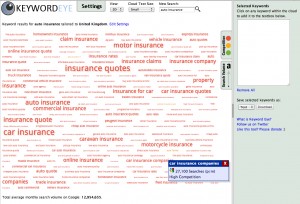 Click to Enlarge
Click to Enlarge